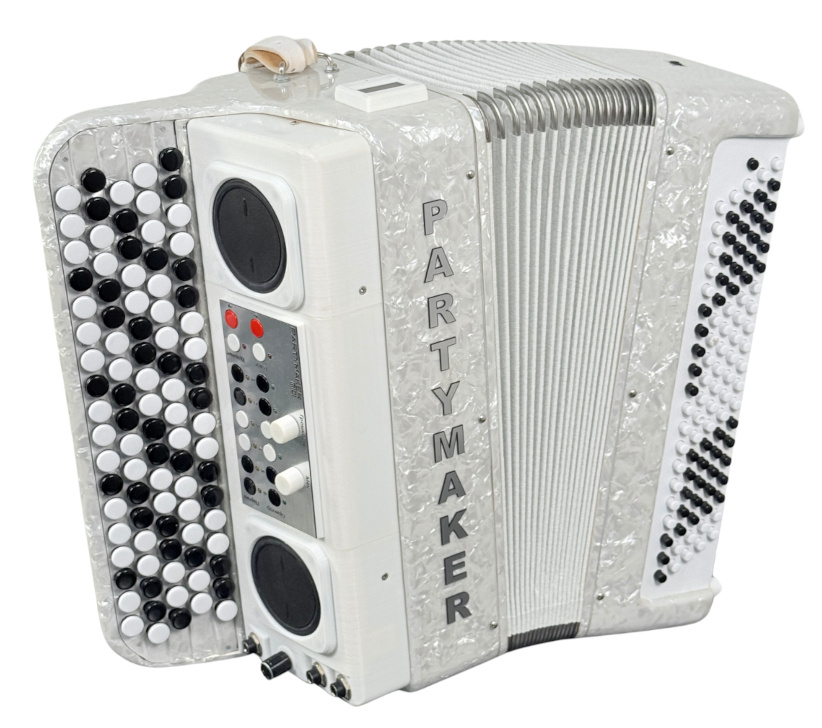
This project is an electronic add-on for a wide range of acoustic accordions that brings the capabilities of a digital synthesizer to them. Unlike conventional fully digital accordions, this system preserves the authentic feel and acoustic character of the original instrument, allowing musicians to seamlessly combine traditional playing techniques with modern digital capabilities.
Often referred to as a “MIDI system”, the core idea is to fuse the expressiveness of acoustic performance with the flexibility of digital synthesis.
“Hybrid” accordion
At the system’s core, this is a hybrid accordion concept - one that combines both acoustic and digital voices. The system makes it possible to blend the two worlds and get the best of both: for example, you can play electronic auto-accompaniment with your left hand, while performing melody lines acoustically with your right. This duality opens up a new expressive space, preserving the charm and responsiveness of a real acoustic instrument, while augmenting it with powerful modern features like synthesizer voices, effects, and backing tracks.
The system can be installed discreetly to preserve the original look of the accordion - as shown below, where only a few knobs and a display are visible:
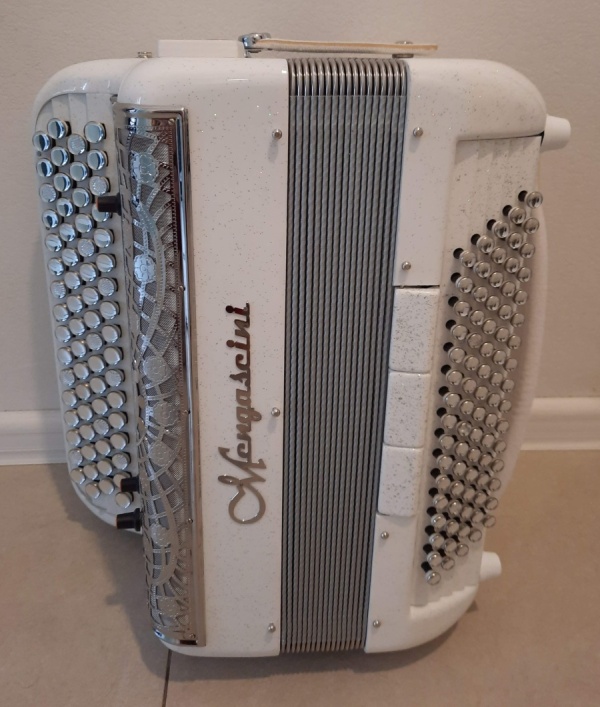
Principle of Operation
The system works by monitoring each valve in the instrument using magnetic (or optical) sensors, detecting when a valve is open or closed. This allows accurate real-time tracking of button presses, which are then converted into MIDI data or directly synthesized audio.
A built-in bellows pressure sensor ensures that the instrument responds to air movement just like a traditional accordion, adding expressive dynamics to the digital sound.
Below is an example of how magnets are installed against the sensors.
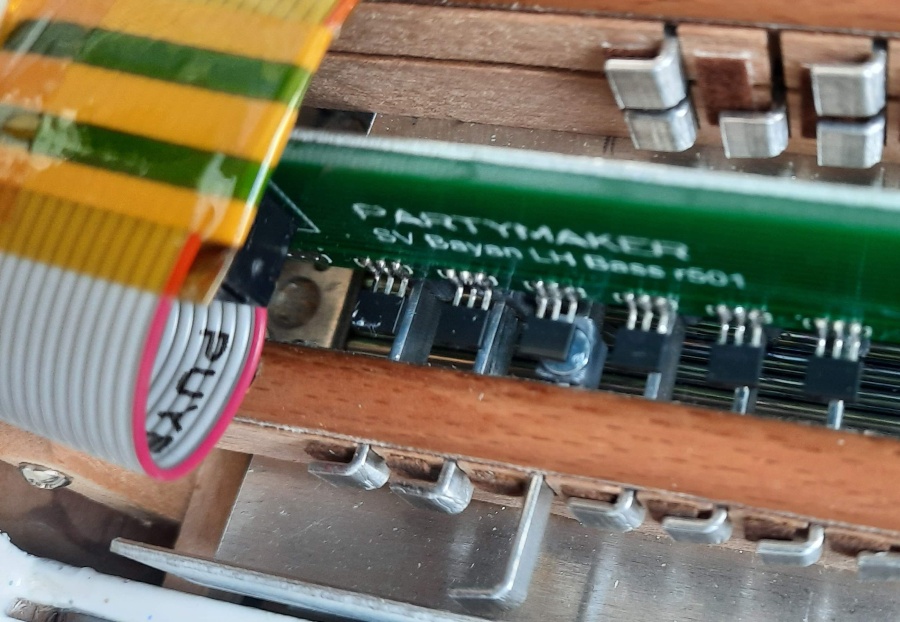
The system integrates a pressure sensor inside the bellows that ensures the behavior of the accordion’s bellows remains true to its acoustic counterpart. This means that when the accordion is played electronically, the bellows respond as they would acoustically, adding an extra layer of authenticity to the performance.
MIDI Innovation Awards 2024
This project is a finalist of MIDI Innovation Awards 2024.
Features
- Fully self-contained: no external modules or interfaces required.
- Adjustable bellows pressure response and sensitivity.
- Built-in rhythm machine and auto-accompaniment with multiple style presets.
- Optional internal audio mixer for backing tracks - just plug in your phone via cable or Bluetooth and play along.
- Customizable effects: echo, chorus, delay, distortion.
- Joystick-based pitch bend and vibrato control.
- Automatic drum accompaniment triggered by bass/chord buttons.
- Rechargeable battery: over 8 hours of use on a single charge.
- Optional wireless audio transmitter.
- Optional microphone system for mixing acoustic sound into the final output.
External interfaces
- USB (MIDI class-compliant), plug-and-play.
- Standard MIDI output.
- Sustain pedal input.
- Two sensor boards (left and right), supporting up to ~220 buttons.
- Control keyboard with assignable functions.
- Optional incremental encoders.
- Stereo output for headphones or speakers.
- Optional stereo line inputs (mixed internally).
- Connectors for an optional microphone system
- Analog joystick for modulation and effects control.
Why modify a classic accordion
- Go digital and leverage your skills with the same feel and response of an acoustic accordion. The same wooden body and weight. The same feel and force on the keyboards. Basically, you just use your skills and don’t have to relearn for a new type of instrument, just use one you already know well.
- It is possible to keep the appearance of an accordion. The only visible part of the system will be a small OLED screen on the top of an instrument.
- Some instruments in the national free-reed aerophone family have no commercial digital alternatives, so the only way to go digital is to install such a system. These instruments are harmonicas, concertinas and bandoneons.
- The system has auto-accompaniment built-in, without any external boxes, interfaces or modules. No such feature is possible in any acoustic accordion.
What’s inside
The system contains several modules:
- The mainboard with an embedded processor. Currently I have two versions: the one with external sound synthesizer module and the one with built-in synth (see picture below).
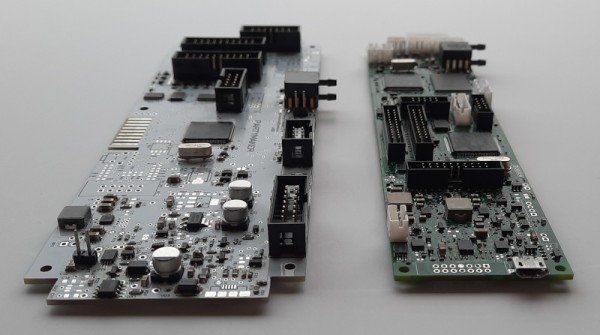
- The sound synthesizer board if external relative to the mainboard.
- The sensor boards containing valve magnetic or optical sensors. Normally there is a single board for each half of an instrument, but some instruments require more in some special cases. Sensor boards are uniquely designed for every type of accordion because of mechanical differences. Sensors layout is customizable via software for each type of instrument.
- Front connectors panel. Optional as connectors may be installed stand-alone.
- Control keyboard for voice switching and system setup (shown below). Normally installed behind the right keyboard and controlled with the thumb.

- OLED display with graphical user interface. The menu language is customizable. Shown below.
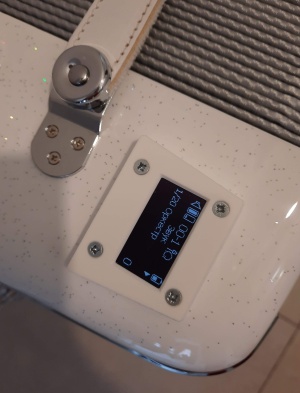
The main board, the synthesizer are installed inside the instrument, sometimes directly on the reed boxes, and connected together. This is one of the prototypes showing how it looks like:
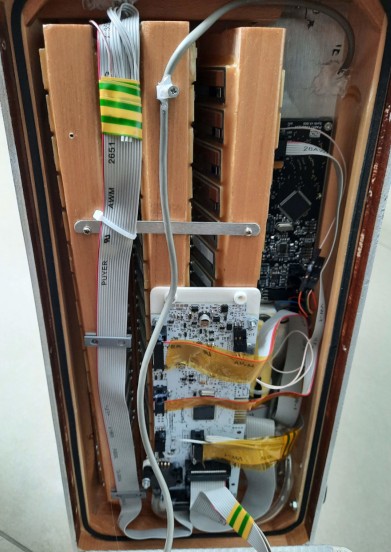
The biggest and the most time-consuming part is installing sensor boards with counterpart magnets or LEDs.
Once all components are connected, the sensors layouts and synthesizer presets are to be configured via USB.
What about the acoustic sound?
When playing electronically, the acoustic reeds are still active unless physically removed. Depending on your preferences, there are several ways to address this:
- Remove the reed blocks entirely for a fully electronic instrument. This significantly reduces weight (e.g., to 6 kg). I use this approach in one of my own instruments. As an experimental feature, in that instrument I have added class D amplifier with 15W speakers which required to redesign a standard power path schematics. As a drawback, the instrument lost it’s very classic original appearance.
- Disable bellows sensitivity through the system UI, allowing for keyboard-only play (similar to a digital piano).
- Reduce bellows sensitivity through the system UI, so the acoustic reeds are not triggered as easily.
- Increase output volume, overpowering the acoustic sound.
- (Recommended) Use an instrument that allows mechanical muting (e.g., some models by Weltmeister, Scandalli, Mengascini).
If you choose to keep the acoustic sound, you can integrate a microphone system and blend both acoustic and digital sources into a unified output. The optional Partymaker instrument microphones support this and offers excellent sound quality with built-in noise reduction and bass enhancement.
Some demos
-
Vladimir Butusov, a musician and friend of mine, presenting his button accordion with the Partymaker system installed (English captions available):
-
I’m performing some solos on the modified Tula BN-51 button accordion:
-
Vladimir Butusov’s stage performance with the use an accordion with Partymaker Synth:
-
A demo on Music China 2024
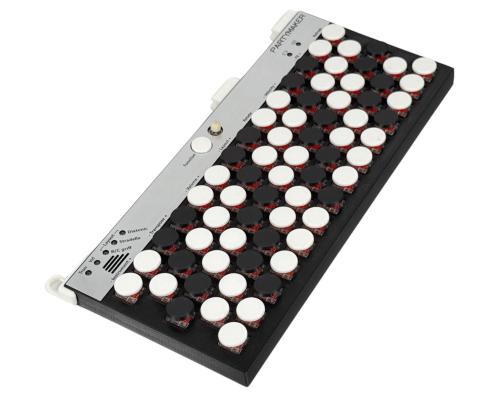
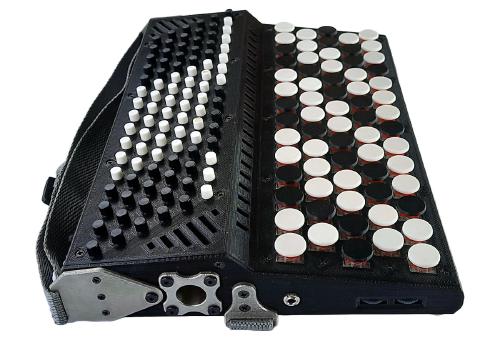
Use the share button below if you liked it.
It makes me smile, when I see it.